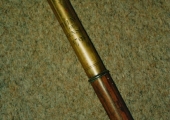The Bradford Hundred
A Hundred was the administrative division below that of the Shire, or County. The name was probably originally related to the area of land nominally required to support a hundred eligible families. Hundreds and Shires came into being in the Saxon period, perhaps as early as the 7th century.
The Bradford Hundred Court was held by the Abbess of Shaftesbury, but was in fact presided over by her Reeve or Steward. It may have been held in Bradford, at the capital manor of the Abbey’s estates where the Manor Court was held, although records suggest it was held in Leigh. Most of its business concerned various aspects of land-holding and disputes between individuals and between individuals and their lord.
The area of the Bradford Hundred covers the Ancient Parish of Bradford (modern Atworth, Bradford, Holt, Limpley Stoke, South Wraxall and Winsley) plus Broughton Gifford, Monkton Farleigh and Wingfield. Westwood and Chalfield had different histories in the middle ages.
 The next level of administration down was the Tithing (or Tything), which began as the area of land that supported ten families. Cases were presented to the Hundred Court by the representative of the Tithing, the Tithingman.
The next level of administration down was the Tithing (or Tything), which began as the area of land that supported ten families. Cases were presented to the Hundred Court by the representative of the Tithing, the Tithingman.
Cases could also be presented by the Hundred to the higher Shire (County) Court, which was presided over by the Shire-Reeve (Sheriff).
After the dissolution of the abbey in 1539 the Hundred continued to exist until quite recent times, being gradually eroded by local government and legal changes.

The modern parishes of the Bradford Hundred

